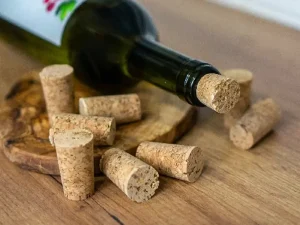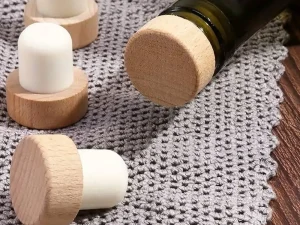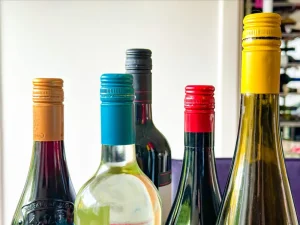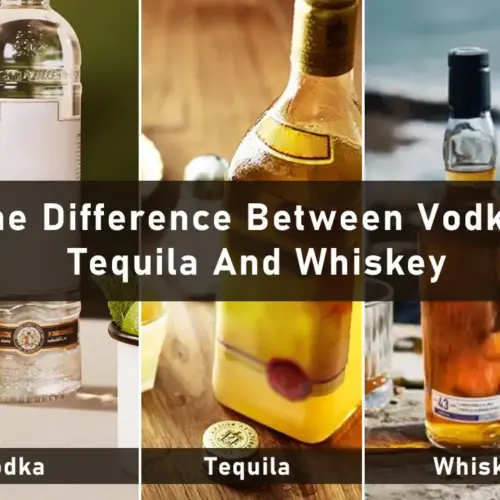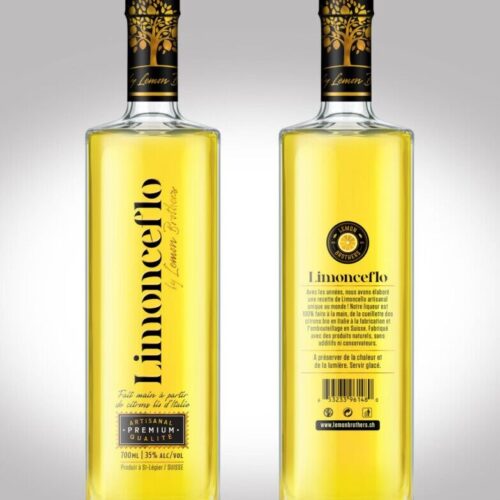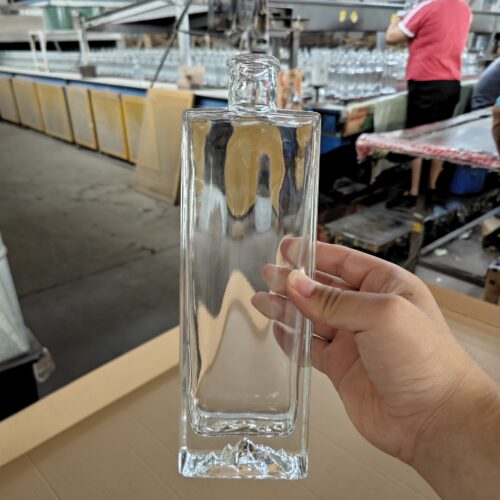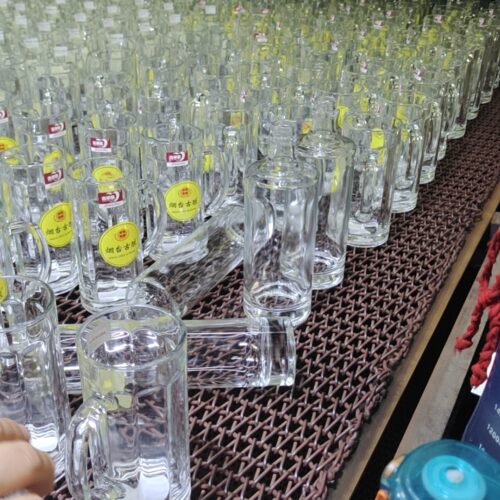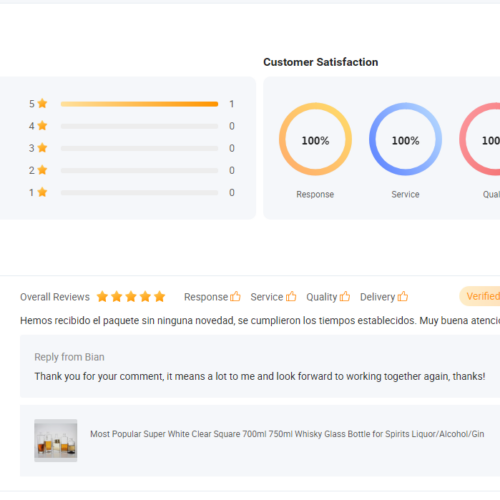Corks and stoppers play a vital role in preventing the wine from spoiling. They also help in the aging process. But have you heard there are different types of wine bottle corks? Generally, people consider that all corks play an equal role in sealing wine bottles. So, the types of corks do not matter. But it is a misconception.
All types of corks and stoppers use different kinds of materials. They have different sealing capabilities and ages. Different corks are appropriate for various kinds of wines. Don’t you know about those types? Worry not! I will discuss a variety of wine bottle corks and stoppers in this guide. So, let’s get started!
Different Types of Wine Bottles Corks and Stoppers
As I said, not all corks and stoppers are created equally. They vary in many terms. Let’s dive and discuss different types of corks and stoppers. You can choose the one that meets your desires after understanding their specifications.
1- Natural Cork
Natural cork is the oldest type among all corks. This type of cork is made from the bark of the oak tree. Natural cork is well-known for its excellent sealing properties. WHY? Actually, the natural cork has small airbags. These airbags enhance the cork’s tightening ability. So, there are fewer chances of entering the oxygen.
Thus, you can preserve the wine with these corks for a long time. But remember, it will not work the same once you open the natural cork. This means they can be used for one time, and after opening, they do not preserve the wine. What I like about these corks is their eco-friendly nature.
They are derived from oak trees and do not harm living things after use. No doubt each thing has some drawbacks too. So, one main drawback of this type is their cork taint. So, they are more likely to be attacked by fungi and can contaminate the wine. However, this contamination is rare. So you can use natural corks.
2- Technical Cork
Technical cork is also a composite consisting of some pieces of natural cork. Let me explain how. It is made of tiny granules of the natural cork. These trim pieces are mixed and crushed together to create a blend. This blend makes technical corks. Remember, these granules enhance the uniformity of the technical cork.
However, small pieces of solid natural cork are also present on both sides of this cork. But the question arises: How is it different from natural cork? Actually, a technical cork is more functional than a natural cork. Due to the presence of natural cork slices, it has excellent selling power.
Moreover, its small granules and uniform structure make it taint-free and more resistant to fungi attack. Yet technical cork keeps the wine fresh for only a few years. The reason is that it has some pores that allow oxygen to enter. This oxygen keeps the wine fresh for some time but spoils it afterward.
3- Synthetic Cork
Synthetic cork is the modern type of wine bottle cork. They are made of polymer foam or plastic. Due to the presence of soft plastic or foam, they have enhanced flexibility and sealing ability. Moreover, their structure is made so that there is no chance of oxygen entering. This can be a drawback of the synthetic cork for some wine.
Because oxygen transfer keeps the wine fresh for an extended period, wine in bottles with synthetic cork is best to use for 3 years. Above all this, synthetic cork is 100% pure from taint contamination. Moreover, they are more durable and flexible than above all types. So you can use them again with the same sealing strength.
4- Agglomerated Cork
Another particular type of wine bottle cork is agglomerated cork. Such corks also consist of small pieces of natural cork. Surprisingly, the agglomerated cork uses the leftover granules. These granules are the by-product (waste) of the other corks. Hence, it is the most cost-effective option. It benefits both manufacturers and consumers by offering lower prices.
However, their lower price doesn’t mean that they have compromised quality. They have excellent sealing strength, flexibility, and, above all, insulation. However, they are not ideal if you want to age wine for many years. Why? Because the granules are so small and compressed that they do not allow the required transfer of oxygen. So, wine in these bottles can be used for 1 to 2 years.
5- Screw Cap (Stelvin Closure)
Screw caps or shelving closures are made of aluminum. So, they are ideal for wine that requires air-tight sealing. Such a stopper keeps the wine preserved for several years. The role of aluminum is very beneficial in these stoppers. Firstly, it is lightweight and easy to open. Moreover, aluminum is resistant to fungi attack.
What I love is that these stoppers seal and keep the wine safe for many years. However, their excellent features have some trade-offs, as these stoppers are slightly costly. The reason is that they are made of aluminum, which is premium but pricey. However, the properties of these stoppers justify their cost.
6- Glass Stopper
Glass stoppers are an invention of the 20th century. They are made from high-quality glass. A small amount of silicon is also present in these stoppers. Silicon gives these stoppers air-tightening capacity. They do not allow oxygen to pass at all, so they are ideal for wine that needs to be preserved for a long time.
Furthermore, their modern look attracts the customer. Their transparency enhances the aesthetics of the wine bottles. As you know, glass can be recycled easily, so these stoppers are eco-friendly. What I like about these stoppers is that they do not lose their sealing ability after opening. So you can use them many times.
7- Vino-Seal or Vino-Lok
Vino seals are the most modern type of stoppers. They are well known for their beautiful appearance. They also use glass material in their making, just like glass stoppers. But instead of adding silicon, these stoppers use plastic. This plastic is present as a ring that fits the bottleneck. Therefore, these stoppers stand out in their sealing ability.
Vino seals are used in bottles that contain high-quality wines. Winemakers use these stoppers to enhance the appearance of their wine bottles. In simple words, these corks give a premium feel to the bottles. Their eco-friendly nature adds to their wide use. However, their prices are much higher as they fall and are used in premium category wine bottles.
8- Zork
Zork is another widely used type of wine bottle stopper. The main component of these stoppers is thermoplastic. The Zork stopper design is divided into three main parts. The upper cap part, the middle flexible part, and the base. The design of Zork is not only attractive but also user-friendly.
These stoppers do not use the screw cork or other special tools for opening. If you are among those who like the “pop” sound while opening the wine bottles, then Zork is a satisfying choice. Additionally, Zork prices are also moderate. So, it is a reliable option for average wine consumers.
Why Do the Types of Wine Cork Matter?
All wine bottle corks do the same job: close the wine bottle. Right? So why are there so many types? That can be confusing—but worry not! Let’s dive in as I explain the need for and advantages of different wine bottle corks.
1- Oxygen Control and Wine Aging
Some wines, such as Pinot Noir and Nebbiolo, require a small amount of oxygen for freshness. However, oxygen is unsuitable for some wines, such as roses and white wine. So, preventing oxygen from entering those wine bottles is crucial. A small amount of oxygen changes the flavor and odor of the wine.
However, long-term exposure to oxygen ultimately makes the wine toxic. All types of corks behave differently in this regard. Their material acts differently for oxygen. Some of them allow oxygen, while stoppers don’t allow oxygen transfer. Having so many types gives us the option to choose the best one for our needs.
2- Preserving Freshness and Flavor
Preserving freshness and flavor is another vital use of corks and stoppers. Different pollutants contaminate the wine and change its flavor. Moreover, temperature changes also affect the freshness of the wine. But when you have a variety of corks, it is easy to choose the cork that maintains freshness and flavor. Some corks are best suited for keeping wine for a short time. Some allow you to age the wine for several years.
3- Brand Image and Tradition
A variety of corks enhances a brand’s image. Some customers relate the opening of corks to tradition and enjoyment. Different types of corks are used in this regard. For example, natural corks are considered ideal for tradition, and synthetic corks are used for a modern appearance. Having all those different types increases a brand’s reputation.
4- Cost Options
All types of corks vary in cost. However, the cost of the cork directly affects the cost of wine. A wine bottle with a costly cork has a higher price, and vice versa. So, different varieties of corks offer a range of costs to the customer according to their budget. Also, the variety of corks and cost-benefit the manufacturers in terms of their sales. Manufacturers use inexpensive cork when they need to keep the cost of wine bottles low and vice versa.
Choosing the Right Cork or Stopper
Choosing the correct wine bottle cork among all the types can be challenging. But you need not worry! This section below will discuss some considerations that will help you select the right one. So, let’s take a short glimpse.
- Different types of stoppers and corks offer different properties. For instance, some are useful for preventing oxygen from entering. In contrast, some corks allow a small amount of oxygen to enter. All these types are designed for different types of wines. So, wisely choose the stopper that enhances the age of the wine.
- All types of corks have different prices. Those prices change due to their design, sealing ability, and production process. So, it is up to you to choose the cork that is budget-friendly.
- Saving the environment should be a significant concern. I would prefer to select cork that is easy to recycle. Moreover, it should not harm living things after being thrown.
- Some corks have the risk of cork taint. This cork taint contaminates the wine, which is not safe to drink. So, choose the cork that is 100% cork taint-free.
- If you use one wine bottle for many days, you should prefer a cork that does not lose its sealing ability after opening. These corks keep the wine fresh and do not allow pollutants to enter.
Frequently Asked Questions
What is the difference between a cork and a stopper?
The main difference between a cork and a stopper is oxygen transfer. The corks allow the oxygen to enter the bottles. This oxygen keeps some types of wine fresh. However, the stopper completely stops the oxygen from passing through bottles.
How long do wine corks last?
The life of the wine cork depends on its structure and composition. It also depends on the external environment. However, on average, natural corks last for decades. Conversely, synthetic corks last for a maximum of 3-5 years.
Cork vs stopper: what should I choose?
If you want oxygen to enter the wine bottle, choose cork. On the other hand, if you don’t want oxygen to enter the bottle, select a stopper. Analyze your needs and then make an appropriate decision.
Conclusion
In this article, I have discussed various types of wine bottle corks and stoppers. All these types offer different properties. For example, some corks have tiny pores that allow oxygen to enter, designed to keep the wine fresh. However, some types do not allow oxygen to enter.
They are specially designed to increase the age of some wines. So, it is your responsibility to choose the right type among those. Choosing the correct type of wine stopper is very crucial. If you accidentally select the wrong among those types, it will spoil the wine inside the bottle. Moreover, it can also be risky for your health.

